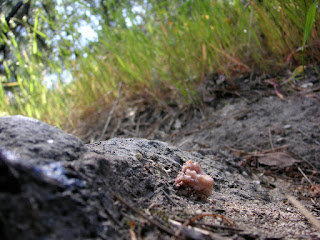May 23, 2010
We were hiking maniacs this weekend, hitting Fort Ord, Jacks Peak, and the Frog Pond in 2 days. Of course, it helps that all are within a few minutes from home (not to mention we don't have a garden or kids to toil over). The Frog Pond is not a place I normally go, because the parking on the side of a very fast road makes me nervous. My hubby used to run this pond regularly at lunch, and he was surprised by the carpet of what we think is duckweed over the water.




















